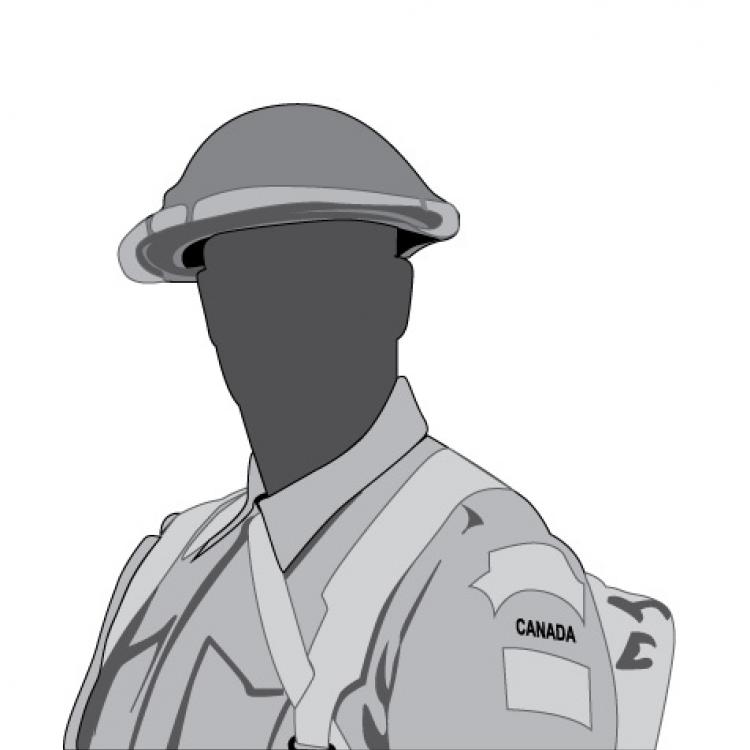McNAUGHTON, Colin
DIVISIONAL UNIT: 1st Canadian Infantry Division, 1st Brigade, 2nd Battalion - Eastern Ontario, Canadian Infantry Corps
RESIDENCE: Norwich - Ontario
MEMORIAL: Ypres (Menin Gate) Memorial - Ypres - West Vlaanderen - Belgium Panels 10-18 & 26-28
PARENTS: Mr. & Mrs. John MacNaughton - London - Ontario
Colin was born in Wroxeter and would have received his primary education in Wroxeter and his secondary education in Wingham. Following his schooling he was employed with the Canadian Bank of Commerce in Wroxter and in Norwich for approximately 3 years. He enlisted into the 168th Battalion - Oxfords at the age of 20 years 5 months and at this time he was 5' 10" in height, he had a medium complexion, blue gray eyes and light brown hair and was of the Presbyterian faith.
Private MacNaughton embarked from Halifax and Canada on board the SS Lapland and arrived in Liverpool on November 11, 1916. In early December he transferred to the 39th Battalion based at West Sandling - Kent. In the 3rd week of December he was assigned to the Canadian Army Pay Corps in East Sandling Camp - Kent and then sent to London to the Canadian Army Pay Corps. In early January of 1917 he transferred to the 6th Reserve Battalion - West Sandling Camp - Kent.
During the first week of February he was admitted into Ontario Hospital - Orpington - Kent until mid April because he had meningitis.
He was then sent back to the 6th Reserve Battalion and from there to the 2nd Battalion based at Seaford - Sussex. Shortly following this he was sent overseas into France to join his unit.
The Canadian Corps found from the advance they made on October 26th & 30th that the higher up the ridge they went their advance became easier because here the ground was much drier. Up to this point at Passchendaele the 3rd & 4th Divisions had brought them this far but now the 1st & 2nd Divisions who were fresh would continue with the push for the ridge. During the early morning of November 6th, the enemy brought down an artillery barrage down onto the position of the 2nd Battalion but the majority of the men were forward of this position and only a few casualties were suffered. The enemy barrage continued onto the rear areas and roads leading to the front. The artillery barrage of the 1st Brigade began to fall at 6 am and at this point the infantry advanced and they were aware of the crack of the 18 pound guns and the deep throated cough of the howitzers and heavy guns.
The enemy immediately replied but their barrage fell well forward of the advancing infantry. The men of the 2nd Battalion advanced and followed their barrage, overran the enemy trenches that had caused them so much misery. The first objective was achieved at 6:15 am, the second objective was achieved at 7:15 am and the final objective was achieved at 9:30 am. At this point in the advance the casualties were estimated to be 300 men either killed, wounded or missing. The enemy did not try to counter-attack even when he had the numbers to do so and as the the 2nd Battalion moved up the ridge the going became easier because it was drier. By late afternoon they consolidated and the Brigade artillery opened up on the enemy at 4:45 pm & 6:00 pm with a protective barrage. Again, the enemy did not attempt to mount a counter-attack but during the night of November 6/7 the enemy artillery was active onto the rear areas and roads. The weather during this day of battle was cold and misty.
Private MacNaughton while advancing up the ridge with his unit north of Passchendaele when he fell in action performing his military duties.


